Badger Helpline for South Yorkshire 07722590184
Badger Versus Hedgehog
The significant decline in the number of hedgehogs in the UK has caused some concern and inevitably, suspicion has turned upon the badger.
Recent widely publicised reports emphasise the fact that badger numbers are increasing whilst hedgehogs are decreasing dramatically. The correlation could be significant but occurs alongside unrelated matters such as increased traffic, use of slug pellets, pesticides, increased fencing, reduced hedgerows etc.
The Hedgehog Preservation Society believes that the increased badger numbers may be only a part of the hedgehog problem, saying, "the main reasons [hedgehog] numbers are falling are the loss and fragmentation of their habitat."
So is the badger completely innocent? It is accepted that some badgers are capable of opening a curled hedgehog and eating it from underneath leaving only the spiked skin. But how frequently? Examination of stomach contents reveals that mammals of all kinds are a very small part of the badger’s diet. In 35 years of experience around badger territory our badger group reps have seen only a handful of hedgehog skins and perhaps a hedgehog dying from any cause would decay until only skin and bristles remain. And how many of the eaten hogs were found as carrion?
And how's this for a theory?
1. Badgers were persecuted for centuries allowing an unnatural increase in hedgehogs.
2. Badgers, now protected, have returned to their natural (higher) numbers.
3. Hogs therefore decreased correspondingly to their own (lower) natural level.
(Note that the argument only works if badgers do affect hedgehog numbers.)
One scientific investigation indicates that
hedgehogs avoid areas contaminated with badger faeces, implying
that hogs and badgers don't share feeding areas. This is however
disrupted when rescued hegehogs are wrongly released into badger
territory.
The situation should be seen in context with
numerous reports of hogs and badgers ignoring each other or feeding
together. A couple of examples are displayed on the following
youtube links, which show badgers feeding alongside hedgehogs. The
situations may be exceptional, but the two species must have
occupied the same territory in order to arrive at the same feeding
dish.
http://www.youtube.com/watch?v=gBCdUEPEtow
Cubs
Female badgers typically give birth in or around
February. There are usually one, two or three cubs in a
litter. New-born cubs are just 15-16 centimetres long
including a tail of three to four centimetres. They may weigh
as little as 75 grams, or as much as 132 grams. They have a
light covering of silvery grey fur, a little darker on the
legs. All cubs have stripes on their faces within a few days
of being born.
The cubs are blind until they are five
weeks old. Even then, they cannot see properly for a few more
weeks.
When they are around 6 to 7 weeks old the cubs
start exploring their tunnels. At 8 weeks old they may come up to
the sett entrances. However they do not usually start
exploring outside the sett until they are nine to ten weeks
old. Even then they like to stay close to their mother
and they do not go very far from the sett entrances, perhaps
until late April or early May.
By
now, the cubs have grown. They weigh around 3 kilograms, and look
like small adult badgers. Their muzzles are shorter though,
and like most young mammals, they are very cute to look
at!
Mother badgers suckle their young for about 12
weeks. After this, weaning starts and the hungry cubs have to
start finding their own food.
To
begin with the cubs follow their mother when she goes foraging.
They soon learn what's good to eat. By the time they are 15
weeks old, the cubs are quite happy to forage alone.
Cubs are very playful. They often play-fight and
chase each other to and fro. They also play a game like 'King
of the Castle'. One cub gets on top of a mound or fallen tree,
and the other cub or cubs try to push it off the top and take
its place.
By
the autumn, badger cubs are nearly as big as adult badgers. They
play much less now, and spend more time eating. They need to
build up their body fat so that they will survive their first
winter when there isn't so much food around.
If
they live through the winter they have a good chance of growing
into fully adult badgers, and having cubs of their
own.
The Badger Clan
Some badgers live alone but most live in groups called clans. A clan is usually made up of several adults and their cubs.
Members of a clan recognise each other by smell.
The badger has a scent gland under its tail, which produces a
smelly liquid called musk. To a badger, with its powerful
sense of smell, every badger's musk smells slightly different.
Members of a clan often mark each other with this musk.
By "swapping smells" like this, each badger ends up with a
smell that is special to his or her clan.
Badgers also stop from time to time to set
scent on the ground. This helps them to find their way around using
their sense of smell. Each clan has its own territory which
contains one or more setts, and places where the badgers can
find food. They have their own pathways, linking setts and
feeding areas. Musking, along with dung pits, is often
prevalent at the border of the clan's territory, which may coincide
with a natural border such as a drystone wall.
If
a badger from one clan wanders into the territory of another a
fight may break out. Badgers have powerful jaws and can cause
nasty injuries when they fight. A badger which gets into a
fight with another badger may well end up with a wound on its
rump above the tail.
Fights can also take place between members of
the same clan, often when there are too many badgers in the
clan and not enough food. Younger animals may have to leave the
clan and settle elsewhere. Occasionally an old badger is 'invited
to leave' and bite marks above the tail indicate in-fighting in the
clan.
Badger Diet
More than 50% of a badger's diet is worms, and invertibrates make up around 15%. Approximately 10% is grain and 10% is small mammals. The rest is made up of fruits, plants and other oddments including birds and eggs. The invertibrates include bee and wasp grubs, and honey is a favourite. It is said, but unproven, that badgers know about the wasp/bee nests for a while but leave them until they are at their peak value.
Diet information is gleaned from analysis of stomach contents and there is no indication whether or not the mammals were found as carrion. The badger has no classic features of a hunting animal so we are left to draw our own conclusions.
Blaming the Badger
Badgers are sometimes blamed for killing chickens. One analysis of over 100 incidents found that foxes were mostly to blame, with around 15% cases inconclusive and around 2% badgers guilty as charged.
Likewise badgers are occasionally charged with killing lambs. The writer once discussed this on Radio Sheffield and a farmer of 45 years experience phoned in to say that at lambing time he moved his ewes next to the badger setts because it was a sheltered area. Another farmer stated that he too had farmed sheep for 45 years with a sett on the land and had never had a problem. However it is without question that a badger would be quite interested in a dead lamb or afterbirth.
The urban badger diet is a different matter. They live on pizza, fried chicken, chocolate cake and, like Paddington Bear, marmalade sandwiches. The calories from one dishful should result from foraging all night long, but the grateful badger wanders to the the next house and eats the same again, provided by other householders who firmly believe they are the only ones feeding 'their' badger.
When badgers over-eat they get fat and may have more cubs until the clan is of a size quite unsuitable for an urban setting.
If you like to see badgers in your garden, just scatter a few peanuts around and leave it at that.
Badgers and the Law
Why are badgers protected?
Badgers and their setts are legally protected from intentional cruelty such as badgerbaiting, and from the results of otherwise lawful human activities such as building developments. The protective legislation has provided a useful tool in deterring the abuse of badgers and in prosecuting those who continue to break the law.
Under the 1992 Act it is an offence to:
• wilfully kill, injure, take or attempt to kill, injure or take a badger;
• Possess a dead badger or any part of a badger;
• Cruelly ill-treat a badger;
• Use badger tongs in the course of killing, taking or attempting to kill a badger;
• Dig for a badger;
• Sell or offer for sale or control any live
badger;
• Mark, tag or ring a badger;
• Interfere with a badger sett by:
• Damage a sett or any part thereof;
• Destroy a sett;
• Obstruct access to a sett;
• Cause a dog to enter a sett;
• Disturb a badger while occupying a sett.
The 1992 Act defines a badger sett as: “any structure or place which displays signs indicating current use by a badger”.
1992 Act: powers of sentence
(i) up to six months’ imprisonment or a fine at level 5 or both. The fine may be multiplied by the number of badgers affected;
(ii) forfeiture of any badger or skin relating to the offence or any weapon or article used;
(iii) order destruction or disposal of dogs;
(iv) disqualification for having custody of a dog.
Badgers are also listed on Schedule 6 of the
Wildlife and Countryside Act 1981
and s11 prohibits the use of certain methods of taking or killing a wild animal, including illuminating devices and some snares.
Offences include causing unnecessary
suffering, or abandoning in circumstances
likely to result in such suffering, and fighting or baiting animals. The sentence under this Act is a fine at level 5 or imprisonment up to six months, confiscation or destruction of dogs and a ban on keeping animals.
The Powers of Criminal Courts Act 1973 (s.43) allows the forfeiture of property used, or intended to be used, to commit or facilitate the commission of any offence, including dogs.
The Control of Pesticides Regulations
1986 prohibit the use of unapproved products to deter or
kill animals, including badgers. There are no chemical repellents
licensed to be used for badgers, since approval for ‘Renardine’ was
withdrawn on 24 March 2005.
Licensing: development and protection of
property. The Protection of Badgers Act 1992 allows for
licences to be issued for a number of purposes including
development. The licences can allow the interference with, and/or
closure of setts. In some cases, licences are issued to allow the
killing of badgers, although this is generally a last resort and
only a handful of such licences are issued each year (except for
the cull.) Other purposes for which licences may be granted are
science, education and conservation; zoos; tagging and marking;
archaeology; disease prevention; agriculture and forestry; land
drainage; and controlling foxes for the protection of livestock,
game and wildlife.
No exceptions for fox hunting.
The Hunting Act 2004, which came into force on18th February 2005,
has repealed the sections of the 1992 Act which permitted hunts to
obstruct sett entrances. Blocking setts is now illegal.
Tips for Badger Watching
The main thing to remember when you go badger watching is that badgers are usually frightened of people because badgers have been hunted and cruelly treated by people for hundreds of years. So this means that if you try to watch badgers at their sett, and the badgers know you are there, you probably won't see much of them.
OK, so how can you make sure that they don't know you're there? When the badger emerges, it is looking, sniffing and listening for signs of danger. So what you have to do when you go watching is to make sure that the badgers don't see you, smell you or hear you.
Making sure the badgers don't see you.
The badger's eyesight is not very good. It can't see colour, and can't see details very well. It can see shapes and movements though. So, to avoid being seen:
Don't wear bright clothing.
Don't stand too close to the sett.
Do stand or sit where the badgers won't see your shape against the sky.
Do keep still. If you move around, the badgers might see you.
Making sure the badgers don't smell you.
The badger's sense of smell is very, very good! However, it's not too difficult to make sure that you are not detected by Brock's nose: Don't walk over the badger sett or on a badger path. The badgers will be able to smell where you have been, and this may frighten them off.
Don't stand or sit in a place where the wind is blowing from you towards the sett. Even better, stand or sit in a place where the wind is blowing from the sett towards you.
Making sure the badgers don't hear you.
The badger's hearing is also very good. If the badgers are going to detect you, it will most likely be because they hear you. So it is very important that you keep as quiet as possible when you are watching badgers.
Don't wear a waterproof coat or jacket, or waterproof trousers. These tend to make a noise which you can't hear, whenever you move, and this noise will frighten the badgers. If you need to keep warm, wear an extra jumper, or a fleece jacket that won't make much noise.
Do try to sit or stand in a place where you will have a good view of the sett, and where you will be comfortable. If you have to move later because you are uncomfortable, or because you can't see the badgers properly, you may make a noise and scare the badgers.
If possible, don't walk on twigs, over dry leaf litter, or through long grass. If possible, do try to walk where the ground is bare, or where the grass is short, so that you don't make so much noise.
If you take binoculars to watch the badgers, take them out of their case before you get to the sett. If you take them out while you are there, the noise might scare the badgers.
Don't talk when the badgers are out, or even while you are waiting for them to come out!
Do enjoy talking about what you have seen, after you have left the sett and got a safe distance away.
You also need to be careful when you approach the sett before the watch. Sometimes, badgers are out before you get to the sett. This means that you must be as quiet as possible even before you arrive at a sett, just in case. You don't want to ruin your badger watch before it has even started!
You should also be as quiet as you can when you leave the sett. You might think that once the watch is over, you don't need to worry any more. Think again! Is it fair to frighten the badgers, just because you have finished watching them? If you scare the badgers when you leave, they may go underground and stay there for some time. This means they have less time to go looking for the food they need to survive. So please think about the badgers, and leave the sett as quietly as you can after your watch.
So, now you know the basic rules of badger watching! If you are taken on a badger watch, and if everybody follows these "rules", hopefully you will have a good time and see lots of badger activity.

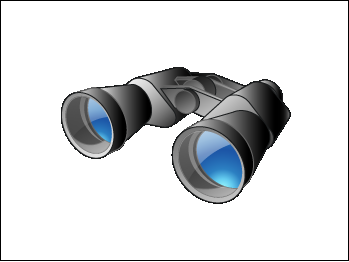
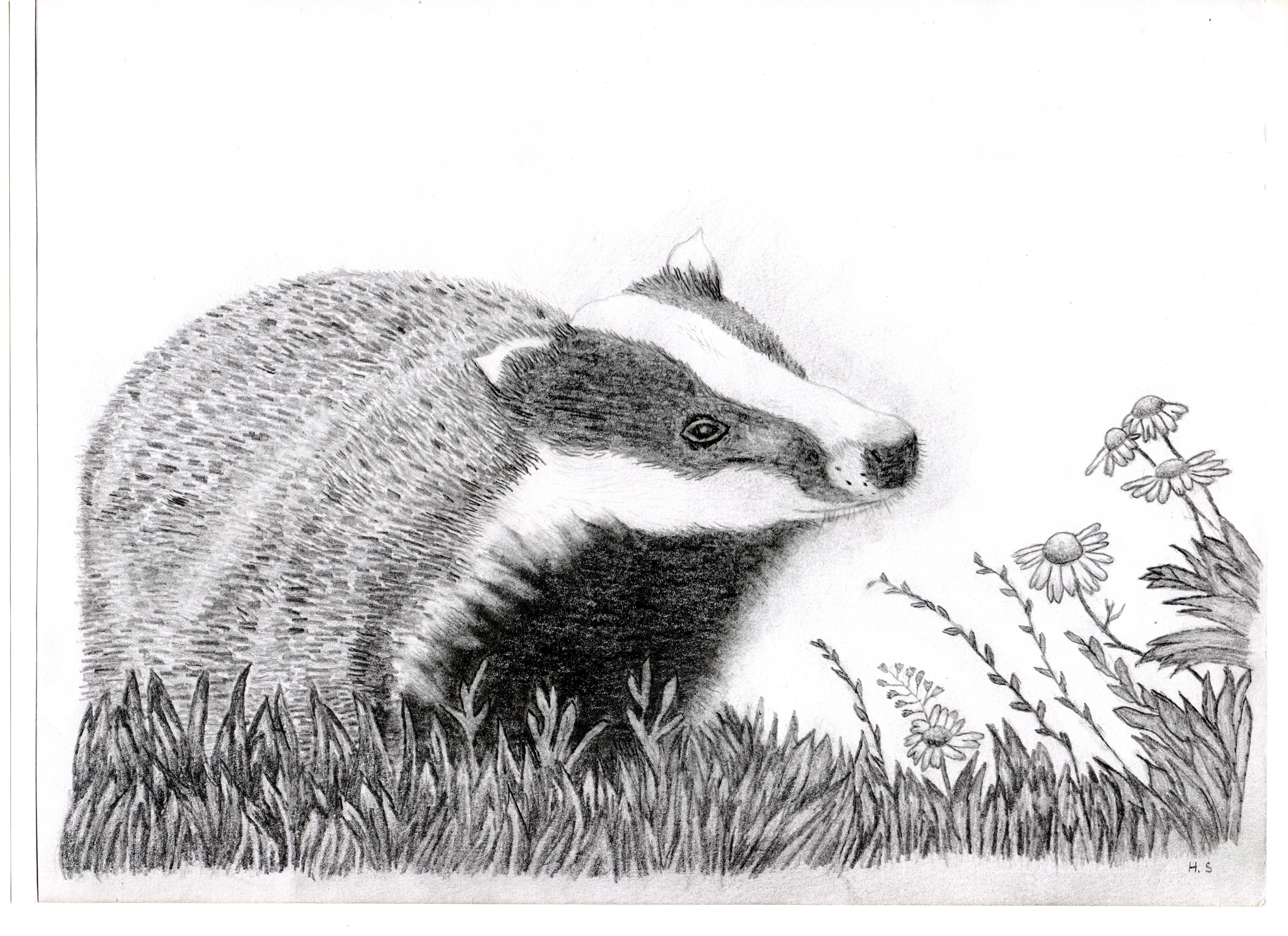
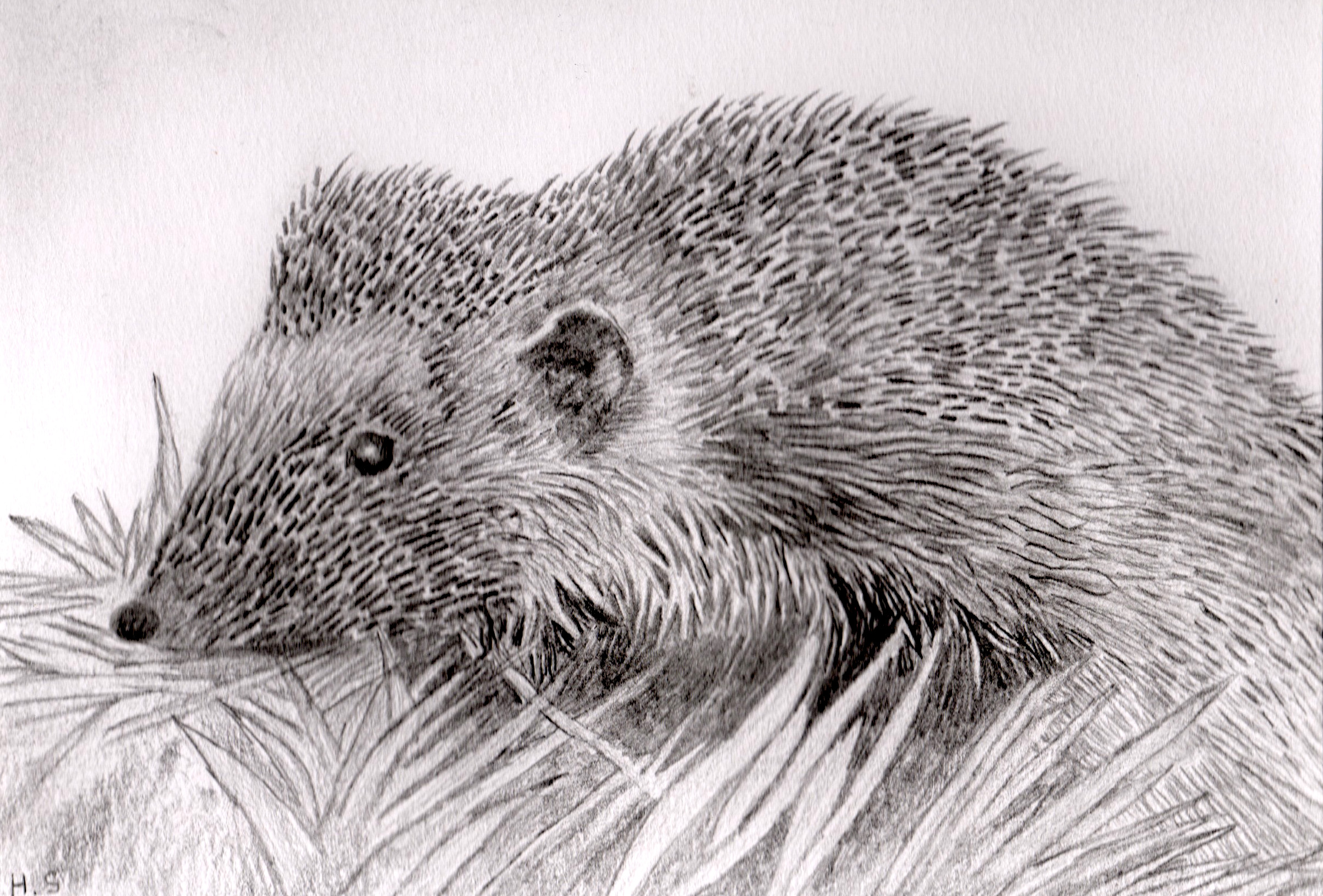
Badger Signs
The presence of badgers can be indicated by ground disturbance, hairs on barbed wire, paths, (especially where taller animals wouldn't pass such as under branches or bushes), badger footprints, which have toes almost 'in line' compared with dog or fox. Look for dung in small pits, often with different levels of freshness. Dungpits may be numerous in one area. Bedding may be left on paths or near the sett.


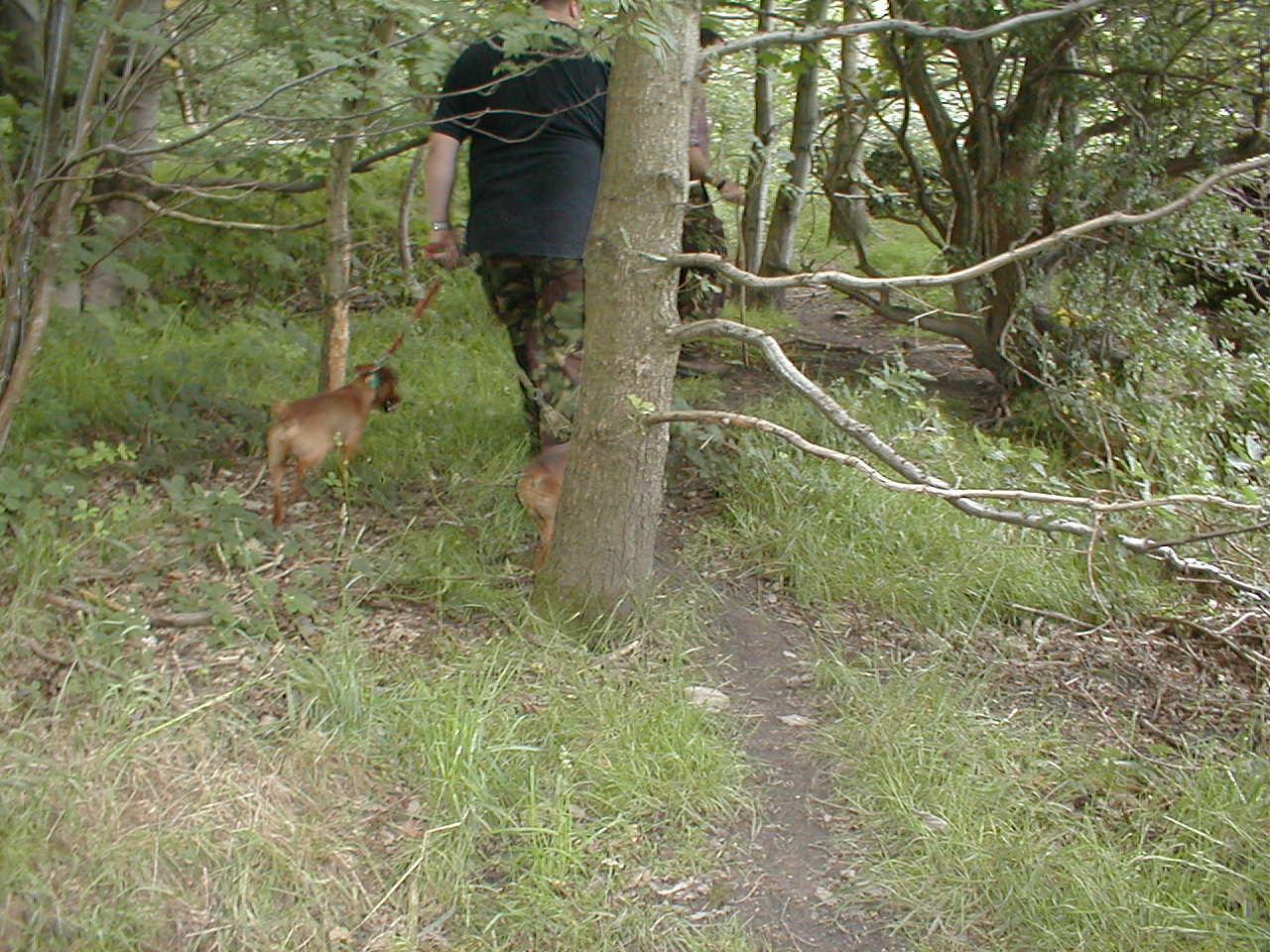


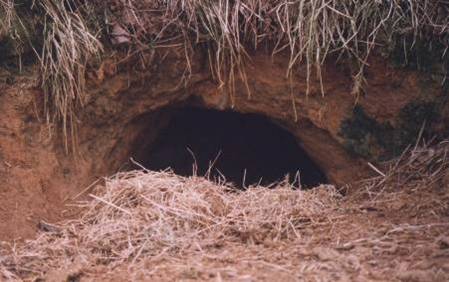
This instrument is used to trace a dog undergroud in a badger sett. The locator box detects a radio signal from the small senser on the dog's collar. It could be used by badger baiters or fox hunt terrier men. Hunting with dogs is illegal in both cases.